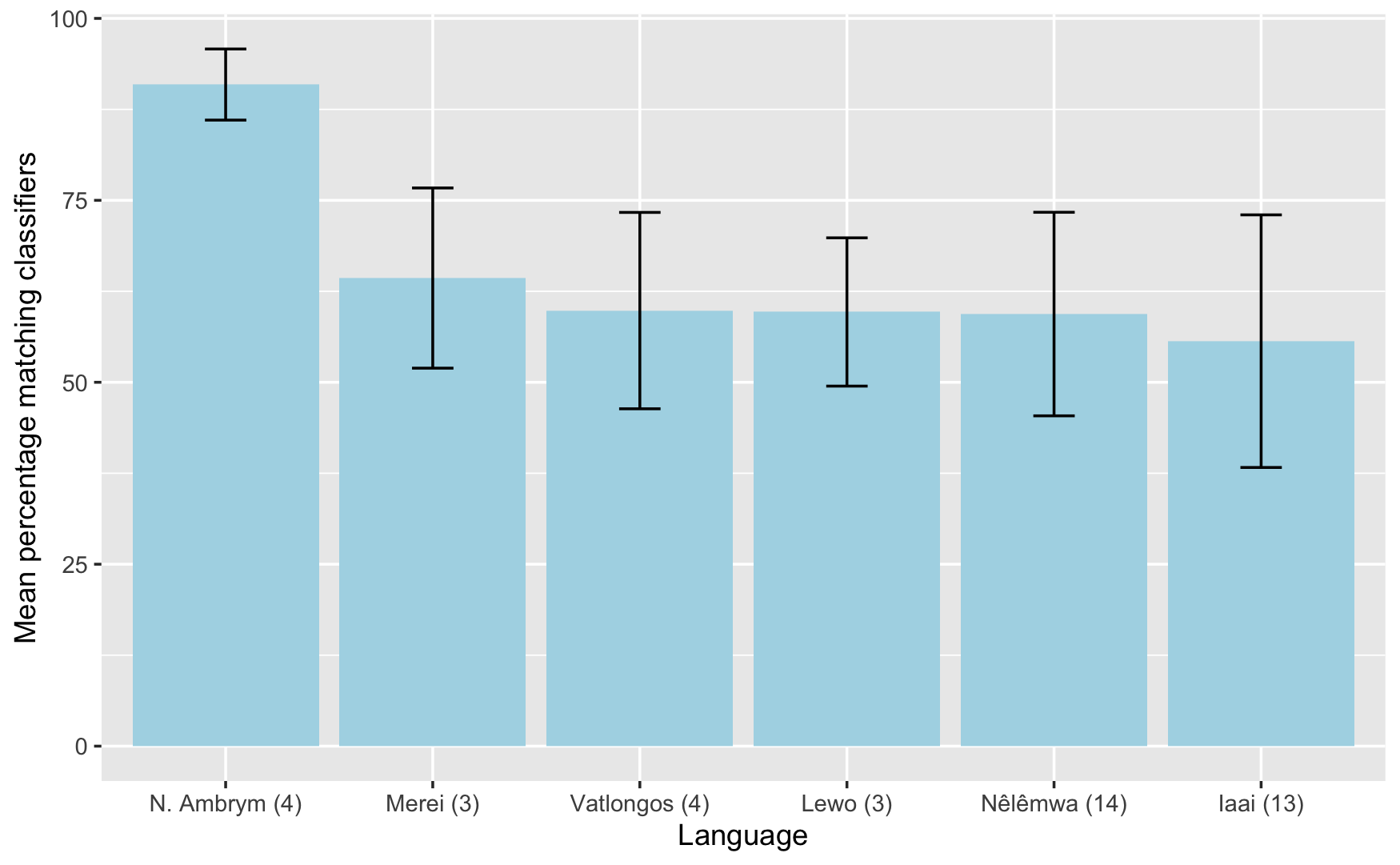Possessive classifier systems are known to be ‘relational’: they signal the interaction between the possessor and the referent:
(1) Lewo (Vanuatu; fieldwork data)
| 1a. | m̃a-u | mrawa |
|---|---|---|
| drink.cl-1sg | coconut | |
| ‘’my coconut (to drink)’’ | ||
| 1b. | ka-u | mrawa |
|---|---|---|
| food.cl-1sg | coconut | |
| ‘’my coconut (to eat)’’ | ||
Use of (1a) is appropriate if the possessor intends to drink the coconut, while (1b) would indicate an intention to eat it. These variable-assignment classifier systems are well attested in Oceanic languages. Yet Franjieh (2016, 2018) observes that the system in North Ambrym is moving towards a fixed gender-like assignment system.
Gender is a familiar reference tracking device. Possessive classifiers can also function for reference tracking without a possessed noun. We investigate this using a storyboard experiment (c.f., Burton & Matthewson 2015), with speakers of six Oceanic languages, including Lewo and North Ambrym. By focusing on classifiers as reference tracking devices we can reveal their similarity to gender systems.
Pairwise comparisons of individual languages shows that North Ambrym’s system functions differently to the other languages in our sample, with the same classifier being used on average throughout a storyboard more than 90% of the time (Figure 1). The other languages in our sample retain typical relational systems, whereas North Ambrym’s system closely resembles a fixed gender-like system.

Figure 1: mean anaphoric agreement for each sample language (total number of classifiers given across all participants for each language in brackets). Standard error bars show 95% confidence intervals.
Gender and classifiers were once thought of as disparate systems of categorisation but are now understood as belonging to a single typological space (Fedden & Corbett 2017). Our findings not only support a unified typology of nominal classification systems but provides critical evidence for the rise of agreement and gender systems from classifiers.
Keywords: possessive classifiers, reference tracking, grammatical gender, Oceanic, storyboards,
References
Burton, S. and Matthewson, L. 2015. Targeted Construction Storyboards in Semantic Fieldwork. In M. Ryan Bochnak and Lisa Matthewson (eds.), Methodologies in Semantic Fieldwork (pp. 135-156). Oxford: OUP.
Fedden, S., Corbett, G G. 2017. Gender and classifiers in concurrent systems: Refining the typology of nominal classification. Glossa: a journal of general linguistics, 2(1:34), 1–47.
Franjieh, M. 2018. North Ambrym possessive classifiers from the perspective of canonical gender. In S. Fedden, J. Audring and G. Corbett (eds.) Non-canonical gender systems (pp. 36-67). Oxford: OUP.
Franjieh, M. 2016. Indirect Possessive Hosts in North Ambrym: Evidence for Gender. Oceanic Linguistics 55, 87-115